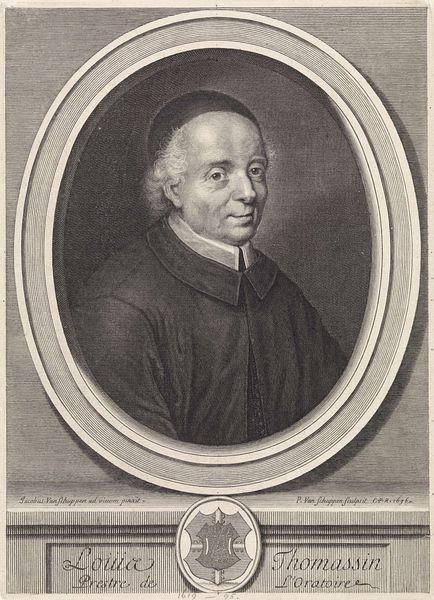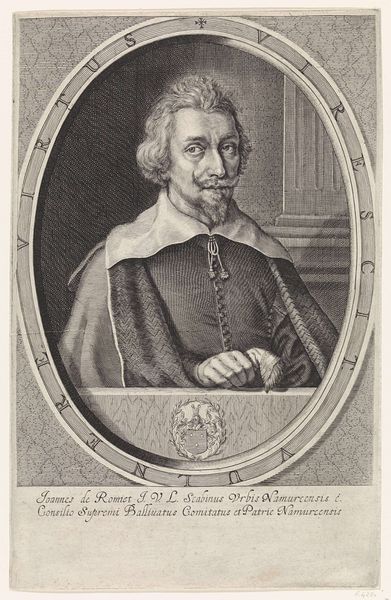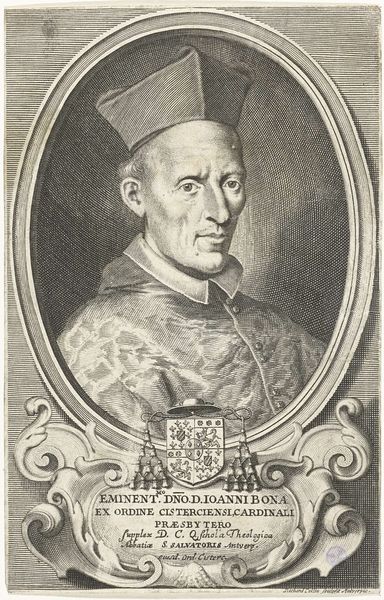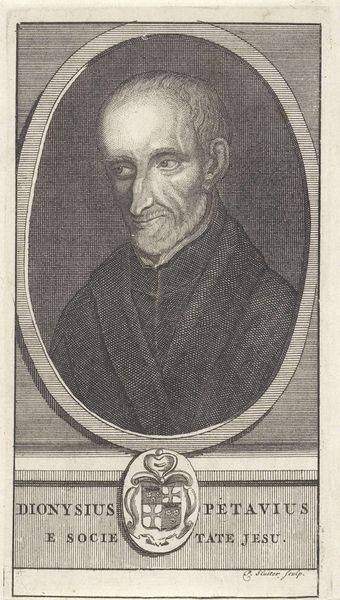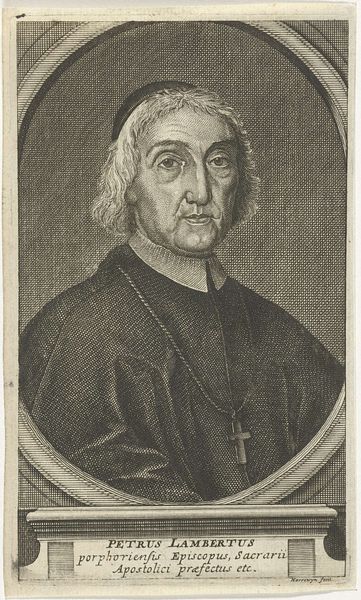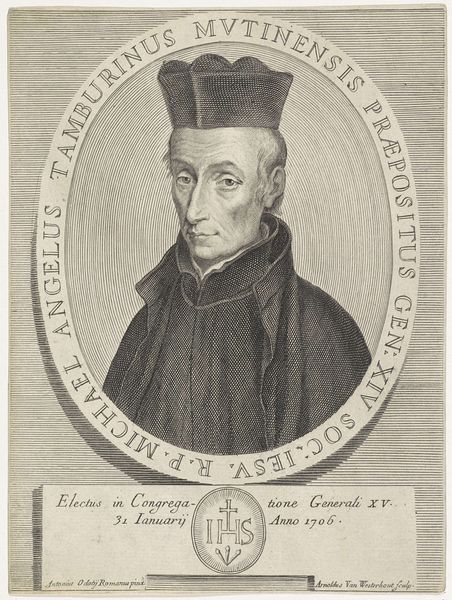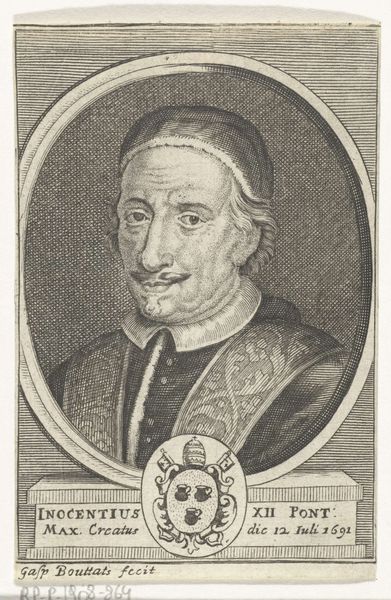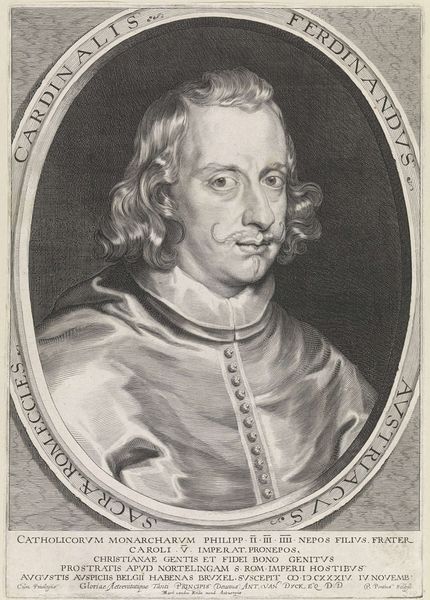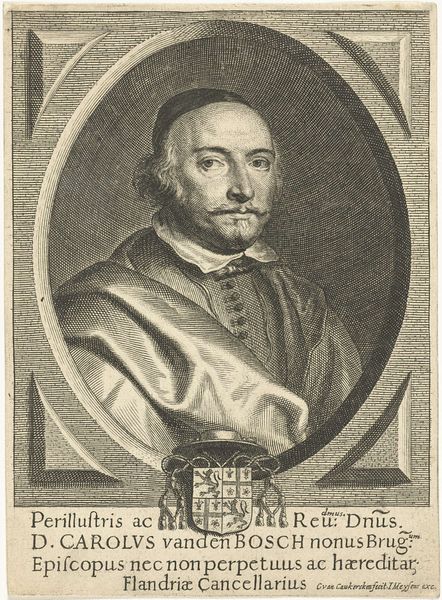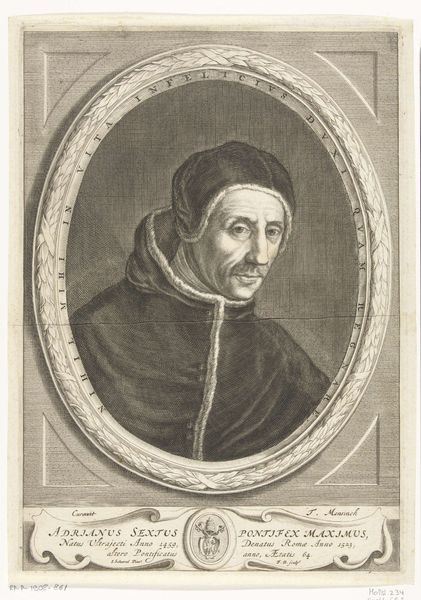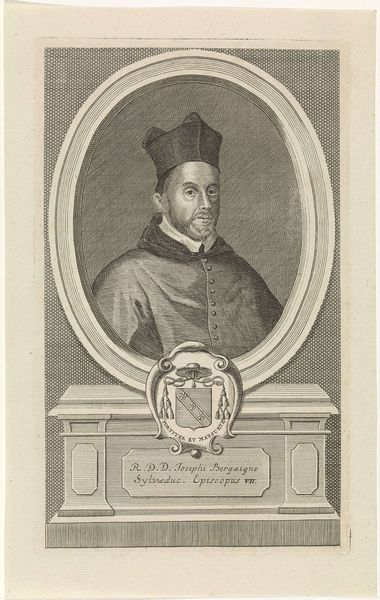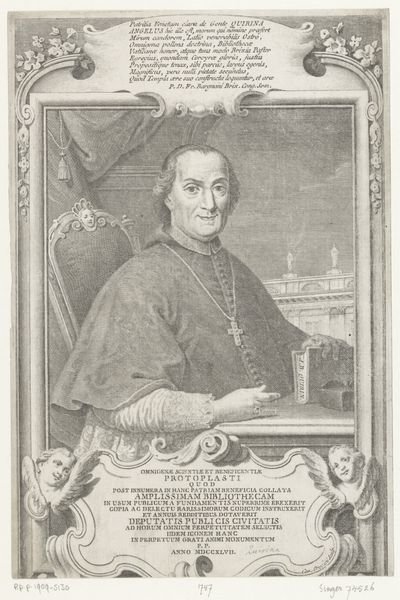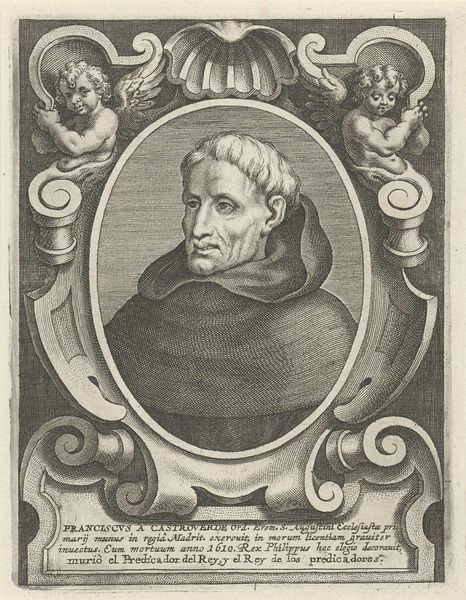
engraving
#
portrait
#
baroque
#
engraving
Dimensions: height 266 mm, width 188 mm
Copyright: Rijks Museum: Open Domain
Editor: So here we have "Portret van de presbyteriaan Petrus de Monchy", an engraving done in 1688 by Pieter van Schuppen. The texture is fascinating! It's entirely composed of tiny lines, and I'm really curious about what someone would think of the making process of this piece. What do you notice first about this work? Curator: The material itself speaks volumes. Engraving, a process deeply rooted in reproducible technologies, brings attention to the democratization of images in the 17th century. How does this particular work, of a religious figure, play into that landscape of image circulation and consumption? Editor: I hadn’t thought about the accessibility aspect. Does the fact that it’s reproducible diminish its artistic value at the time? Curator: Not at all! Instead, it transforms the very notion of value. Consider the labour involved in the piece; the skilled artisan painstakingly carving those lines, versus the value of the man depicted. And where did that metal come from, who worked on it and who consumed this finished image? The image also becomes a commodity, available for widespread distribution and consumption, fostering both recognition and social commentary. Editor: That's interesting. So, you're suggesting that its value resides not just in its aesthetic quality, but also in its existence as a fabricated object embedded in a complex system of production and consumption? Curator: Precisely. Looking at the lines and knowing it’s reproduced by labor connects us to questions of accessibility and value inherent in the production, replication, and distribution of art, versus pure aesthetic judgements. What do you make of the labor depicted through clothing in relation to religious virtue here? Editor: It sounds like viewing art through the lens of production offers a unique perspective! Curator: It helps reveal these underlying systems and biases that are often unseen if you are simply consuming. This also reshapes our traditional notions of 'high art' itself! Editor: This gives me a lot to consider regarding this and all artworks going forward! Thanks!
Comments
No comments
Be the first to comment and join the conversation on the ultimate creative platform.

